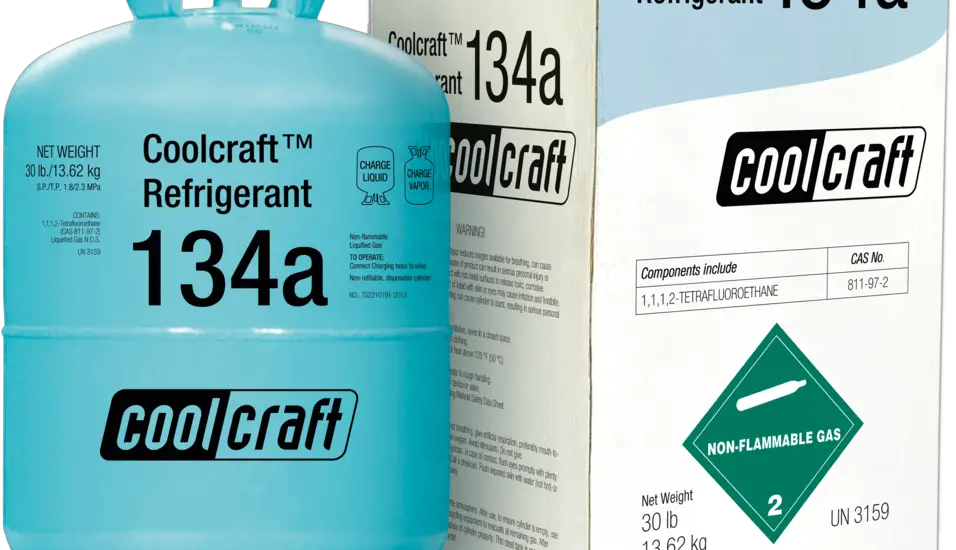“Refrigerant for Mini Split” – four words that can make or break your mini split system. The right refrigerant can turn your air conditioning from a simple appliance into a whisper-quiet, eco-friendly, powerhouse. Ready to learn how? Let’s jump right into it!

Table of Contents
The Impact of Refrigerant Choice
Choosing the right refrigerant is no simple task – it’s a game-changer. Not only for the longevity of your mini split but also for our planet.
Environmental Considerations
Hey, ever thought about how your mini split might be affecting the planet?
Ozone Depletion Potential (ODP)
Yes, it’s true. Some refrigerants used in the past had a high Ozone Depletion Potential (ODP). That’s science-speak for saying they weren’t too kind to our protective ozone layer. (EPA, n.d.)
Global Warming Potential (GWP)
That’s not all. Other refrigerants have a high Global Warming Potential (GWP). These bad boys could contribute more to global warming than CO2! It’s like putting an extra blanket on an already too-hot planet. (EPA, n.d.)
Energy Efficiency
The right refrigerant doesn’t just keep your room cool. It can also keep your electricity bill cool.
How Refrigerant Type Affects Energy Consumption
Not all refrigerants are created equal. Some are like an Olympic sprinter, efficient and powerful, while others are more like a Sunday jogger, a little slower and less efficient. The right refrigerant can do more with less energy.
Environmental and Cost Benefits of Energy Efficiency
Who doesn’t like saving money? But did you know that choosing an energy-efficient refrigerant is like hitting two birds with one stone? You save on your bills and contribute to a healthier planet. Win-win!
For more articles on refrigerants, click here.
Understanding the Refrigerant Specifications of Your Mini Split
Just as you wouldn’t put diesel in a petrol car, you need to be aware of what kind of refrigerant your mini split system requires. This is essential to ensure optimum performance and longevity of the system. There are different types of refrigerants like R22, R410A, and R32, each with its own properties.
Manufacturer’s Recommendations
Manufacturers generally specify the type of refrigerant ideal for the system. Following this recommendation is important to ensure your mini split operates optimally and to avoid potential damage or inefficiency.
Checking Refrigerant Type and Capacity in Your Mini Split’s Manual
If you’re unsure about the recommended refrigerant, check the manual that came with your mini split system. It will contain the details about the type of refrigerant and the capacity your system requires.
Complying with Legal and Environmental Regulations
Various regions and countries have laws and regulations about the type of refrigerants that can be used, mostly due to environmental concerns. Some refrigerants contribute to global warming and are therefore being phased out.
Legal Restrictions on Refrigerants
For example, the use of R22, also known as Freon, is illegal in many places due to its high potential for ozone depletion. Be sure to check local laws before purchasing or replacing refrigerant.
Checking Local Regulations on Refrigerant Usage
Since laws vary by region and country, ensure you’re informed about your local regulations. Some areas might require a certified professional to handle refrigerant replacement due to the potential hazards involved.
Assessing Refrigerant Performance and Suitability
Consider the performance characteristics of the refrigerant, such as its cooling efficiency, and whether it is suitable for the temperature and pressure conditions in your area.
Temperature and Pressure Characteristics
Different refrigerants operate optimally at different temperature and pressure ranges. For example, R410A works best at higher pressures than R22. Make sure you choose a refrigerant that matches your system’s specifications and local climate conditions.
Compatibility with Existing Equipment
Ensure the refrigerant is compatible with your mini split system. Incompatible refrigerants can lead to performance issues, potential damage, and increased wear and tear.
Replacing Refrigerants in a Mini Split System
Replacement of refrigerants should be done carefully to avoid any harm to the system or the environment.
When to Replace Refrigerant in Your Mini Split
The need to replace refrigerant often comes up if the system isn’t cooling effectively or if there’s a leak. However, refrigerants should last the lifetime of the system under normal circumstances.
Signs of Low Refrigerant Levels
Signs of low refrigerant levels include decreased cooling capacity, the system taking longer to cool down a room, or the appearance of ice on the evaporator coils.
Regular Maintenance and Refrigerant Top-Up
Ensure regular maintenance of your mini split system, including checking the refrigerant levels and topping up if necessary, to keep it running smoothly.
The Process of Refrigerant Replacement
The process typically involves the removal of old refrigerant, checking for leaks, and then filling the system with the new refrigerant. This process can be complex and is best left to professionals due to the potential for harm to the environment and personal safety risks.
Safety Precautions for Handling Refrigerants
Handling refrigerants require safety precautions as they can cause frostbite or eye injury, and improper handling can lead to harmful environmental effects. Always wear appropriate protective equipment, and handle refrigerants in well-ventilated areas.
Steps in Refrigerant Replacement
Recovering the Old Refrigerant: This step involves safely removing the old refrigerant from the system using a recovery machine.
Checking for Leaks: Before adding new refrigerant, the system should be checked for leaks.
Evacuating the System: The system is then evacuated using a vacuum pump to remove any remaining refrigerant or contaminants.
Charging the System with New Refrigerant: Finally, the system is charged with the new refrigerant according to the manufacturer’s specifications.
Conclusion
By understanding your mini split system’s refrigerant needs and choosing the right one, you can enhance the performance and longevity of your device while contributing to environmental sustainability. That’s a win for you, your mini split, and the planet.